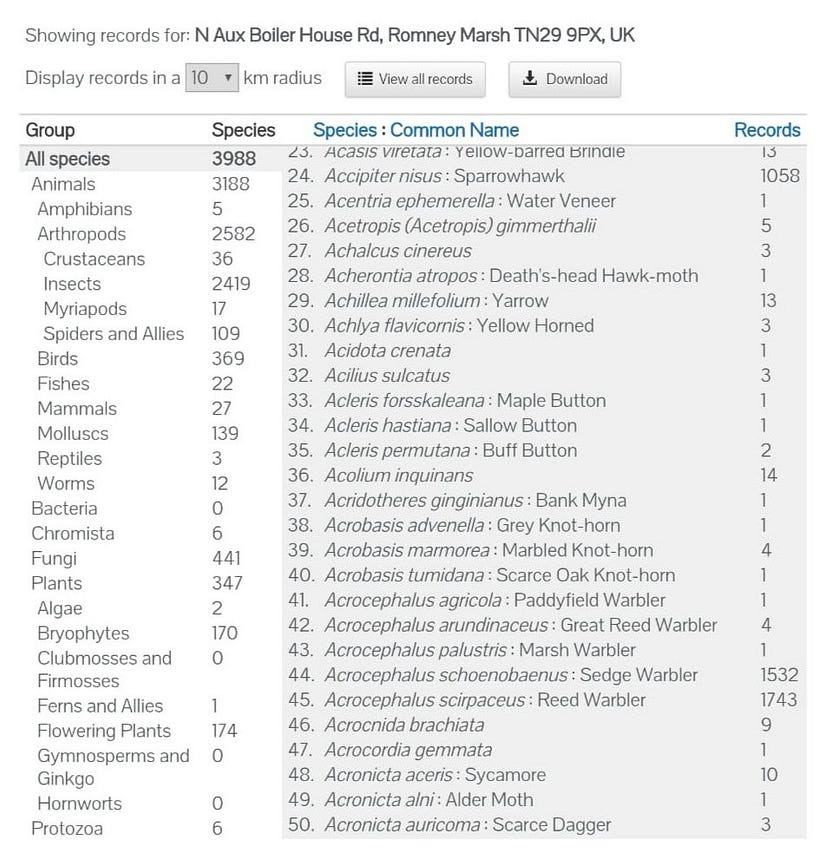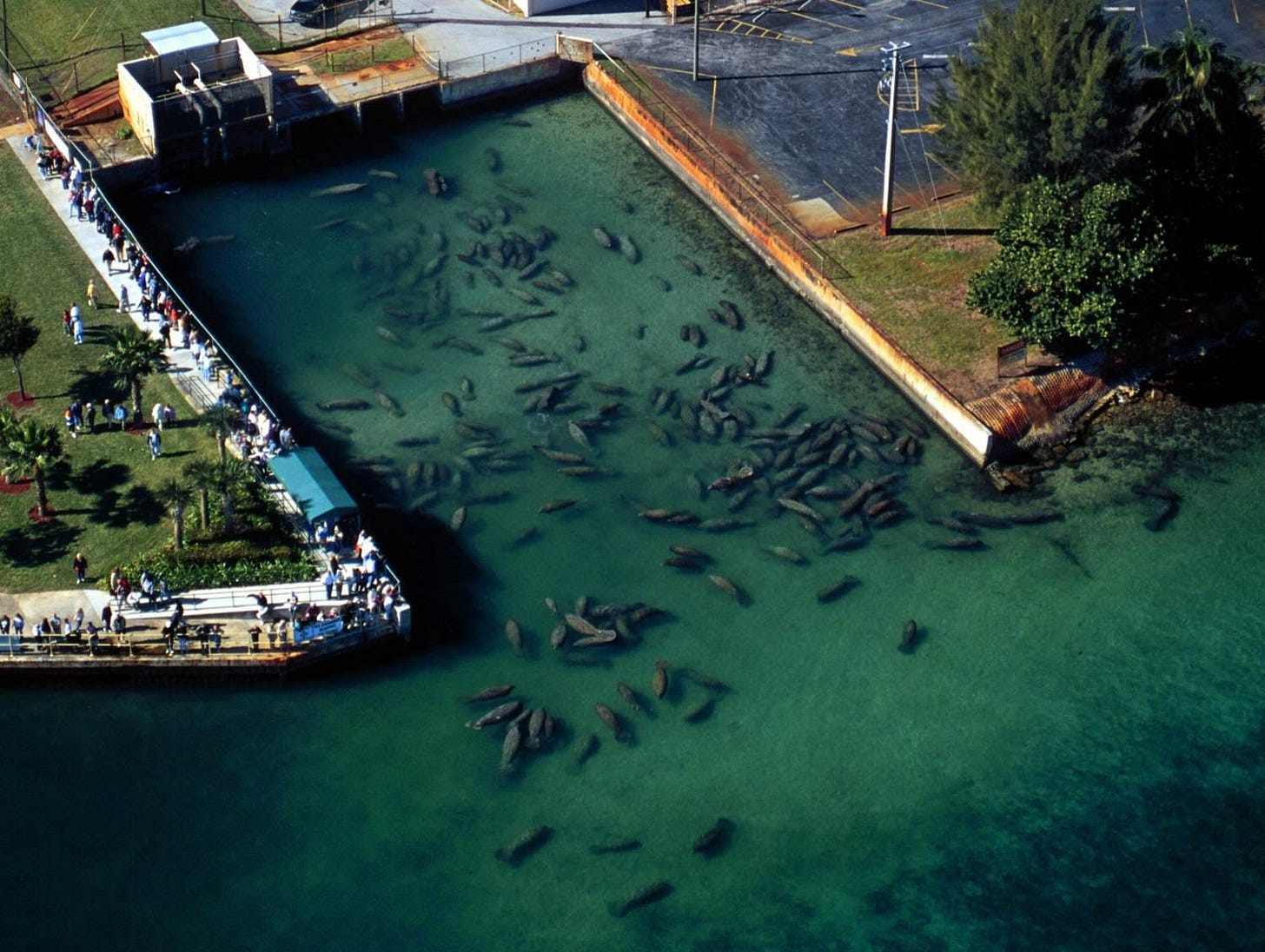Nuclear and nature: the love story no one wants to tell
And the people who are fighting to keep it that way
I love birds. My youngest daughter is named Raven, thanks to a particular fascination I have with corvids.
I am fortunate that many bird species frequent my back garden, including sparrows, blackbirds, great tits, blue tits, chaffinches, and the occasional raven or crow. I was sad to learn that some birds are struggling to adapt to the changing climate and that great tits are amongst the many species that are likely to suffer. According to one study, the great tit is at risk due to unusually warm temperatures that are likely to impact the species’ food sources.
Yet many campaign groups are protesting the building of clean energy in the UK, and falsely claiming that nature is at risk because of it.
Birds of a feather: Who is fighting against nuclear energy?
The conservation and wildlife charity the Royal Society for the Protection of Birds (RSPB) is against the construction of the proposed Sizewell C nuclear power plant next to the existing power plants in Suffolk, which neighbour the Minsmere nature reserve. The RSPB claims that wildlife will be harmed by the new power station, despite having no evidence to back up such an assertion, and even though wildlife on the existing nuclear sites is thriving.
Just last year the RSPB approved a gas power station on its Saltholme reserve, which was only 100 metres away from a Site of Special Scientific Interest (SSSI) in Stockton. In this manner, the organisation appears to support gas, while simultaneously opposing thirty energy projects in the UK, including onshore and offshore wind, wave and tidal projects, carbon capture storage (CCS) and nuclear.
Together Against Sizewell C (TASC) has been campaigning heavily against Sizewell C since 2013. TASC calls itself a local campaign group, but many of the people who are involved and who are funding TASC do not live in the area, and one of the backers of the group is actor Bill Nighy, who owns a £2 million property in London. Nighy also owns a second home in Suffolk. The actor previously fought to have a 60ft horse chestnut tree with a preservation order near his house in London chopped down, and succeeded in having trees in his neighbour’s garden cut down as well (an ash and a willow).
Friends of the Earth and Greenpeace are also heavily fighting to prevent new nuclear power plants from being built, as well as other clean energy projects.
A wonderful world: The real story
We cannot displace fossil fuels without nuclear energy. This is true according to the scientific consensus of the Intergovernmental Panel on Climate Change (IPCC), and it is an argument that has substantial backing from leading climate scientists, concerned conservationists, and respected environmentalists. By clinging to irrational fears of nuclear energy, and actively preventing new power plants from being built, some so-called green organisations are harming our planet and the life that depends upon it.
Evidence shows that nuclear is much cleaner than the alternatives that we currently use to power our lifestyles and that millions of lives have been saved by displacing fossil fuels with nuclear energy.
We rarely hear the success stories of nuclear and nature, so consider the story of the manatees in Florida that benefit from the warm water around the Crystal River nuclear plant so significantly that when the plant was decommissioned marine biologists worried that the numbers of manatees would decrease.
As NPR reported: “In the 1970s, manatees were on the brink of extinction, endangered by speed boats and a disappearing habitat. But when power companies noticed manatees hanging out near their power plants in search of warm water, they saw an opportunity.
The power companies proposed working together with environmentalists. That alliance helped to turn the warm waters of the power plants into manatee refuges — helping to save the sea cows.”
This is an example of evidence-based climate action at its best.
Meanwhile, the Dungeness nuclear power station, which is situated on the Dungeness nature reserve in Kent, is also home to much wildlife and rare habitats. Visitors to this area will find Dungeness Bird Observatory in the shadow of the nuclear power station, and yet this same area is also popular with myriad species including the Jack Snipe, Sandwich Tern, Peregrine Falcon, Black Restart, Kittiwake and many more diverse and rare birds. The bittern is a very rare species of bird that has been found living next to the Sizewell site. Families also happily live next to the power plant. Despite what the RSPB claims will come to pass if Sizewell C is built, the area is teeming with life despite the presence of the existing power stations, Sizewell A and Sizewell B. The former power station has been there since 1966.
The Sizewell B nuclear plant, which I visited one summer for a swim, is also part of a beautiful nature reserve that is home to much thriving wildlife.
Why is wildlife around nuclear power plants thriving?

One reason why wildlife thrives around nuclear power plants is that habitat creation is part of the package. The team at Sizewell has already rewilded 180 hectares of land and spent several years creating reed beds, ditches, grassland, heathland and scrub mosaic at the site. Post-construction, most of the Sizewell C site will also be rewilded.
Graham Hinton, who has worked as a land manager for the Sizewell estate for thirty years, says “When I first came here, biodiversity and ecology wasn’t the priority it is today. The focus was the designated sites like Sizewell Marshes rather than the arable land outside. The real change happened when Sizewell C became involved and started converting arable land that was of very low ecological value to much higher-value habitats. Sizewell C made the difference in terms of scale, which is really encouraging as an environmental manager.”
I spoke to independent wildlife consultant Jonathan Cranfield about this. “Nuclear power comes with plenty of room for biodiversity, semi-natural habitats and wildlife,” he told me. “The construction of Sizewell C offers significant opportunities for rewilding, habitat creation and management. It’s vital for local biodiversity gains, as it brings with it extensive ecological monitoring, plus clean and reliable power for millions of people. Several power stations around the country are in fact places that rare birds like peregrines call home.”

Another reason nature loves nuclear is that the land footprint of a nuclear power plant is very small. Nuclear uses the least amount of land of all energy sources. The completed Sizewell site will cover less than 0.2% of the total area of the Suffolk Coast and Heaths Area of Natural Beauty. Compare this with the 90,000 hectares required for an onshore wind farm, and it’s difficult to see how protesting the site on environmental grounds makes sense.
As well, there is always a contained perimeter around nuclear power plants, which is designed to keep members of the public away from the plant. This provides a peaceful and unpopulated area for wildlife to spend time in.
Jobs not snobs: What do local people think?
When I visited Suffolk to find out how local people felt about the power plant, I found that TASC does not have substantial local public backing and that many people are angry with how much positive media attention the group is attaining, while claiming to speak for all residents. Like many well-funded predominantly middle-class campaign groups, TASC has been well-received by the mainstream media, with much positive coverage of their campaigning.
I found that support for building Sizewell C is high among local people, who feel that it will bring much-needed jobs to the area - 10,000 jobs according to EDF - and opportunities for their children.
TASC argues that “EDF have only seen fit to model climate change impacts and flood risk to 2140 even though lethally hot and radioactive spent fuel is expected to remain on site till the late 2100s”, and Sizewell C will leave a lethal legacy of radioactive waste on our crumbling shore to be guarded for hundreds of years by generations as yet unborn,” which are arguments that completely ignore the fact that spent fuel can be easily transported to another location, and even recycled. By misleading people in this manner, TASC is raising substantial donations through its crowdfunding efforts.
TASC recently launched and lost a legal challenge against EDF, arguing for ‘alternative solutions’ (meaning renewables) and making various spurious arguments about how the power plant is not ecologically sound. In court, Justice Holgate dismissed their challenge, summarising that some elements were "totally without merit." TASC spent at least £20,000 taking forward the legal challenge, and has now been ordered to pay £10,000 towards the Department for Energy Security and Net Zero's costs.
The group appears to be funded by Friends of the Earth and crowdfunding appeals where most of the donors do not live in Suffolk or near the proposed power plant. The comments for the crowdfunder show a donation from Campaign for Nuclear Disarmament (CND) Cymru, a donation from ‘Brid’ who writes: “I do not often respond to "Urgent" pleas. [sic] but 1 I hate nukes and 2 Suffolk is one of my favourite places in England. I now live in Belfast so have not ben for some years…” and a donation from Suzanne who writes: “I don't live in the area…Renewable [sic] are the future.”
More notably, a £500 donation from CND says: “Good luck ! Thanks for your support against Hinkley Point C, Wylfa and Trawsfynydd.” (These are nuclear power plants on the other side of the country, in Somerset and Wales.)
TASC pledges to continue to fight against Sizewell C, which will inevitably slow down the construction process further, and drive up the cost of the nuclear power plant. Meanwhile, in the UAE, where there has been no opposition to building clean energy, and where they are taking the clean energy transition seriously, four nuclear reactors have successfully been constructed in under ten years, and the project came in under the expected budget. That’s 25% of the electricity needs of the country met in under a decade. Meanwhile in Britain, gas-fired power plants accounted for 38.5% of generation in 2022.
On its website, the RSPB states that: “our campaigning is underpinned by expert analysis, practical demonstration and conservation delivery - but we campaign as vigorously as we always did to ensure the next generation can enjoy wildlife as we do.” However, their stance on nuclear power shows the opposite to be true. Not only are they going against the scientific consensus, but they are in denial of the fact that without reliable clean energy, we will continue to contribute to deaths from air pollution and heat the planet.
After seeing the CEO of The Wildlife Trusts support the RSPB’s misinformed position that new nuclear “will hinder not help action on climate,” will be “devasting for wildlife,” and “is not needed”, I cancelled my membership with Devon Wildlife Trust, informing them that I will support them again if they decide to reconsider their unscientific opposition to new nuclear.
Save the planet: The bigger picture
Sizewell C is a small, eco-friendly site that will power six million homes with clean energy, in a country that is currently largely dependent on fossil fuels, including burning coal. By displacing fossil fuels, the power plant will save lives. By bringing down our emissions, it will help to fight climate change.
Concern for nature is not a reason to protest nuclear power plants. If they truly believe that we are in a climate emergency, campaign groups that claim to care about the environment cannot continue to oppose clean energy projects.
The two-reactor plant will be generate 7% of the UK’s electricity needs for roughly sixty years. How many lives will that save? How many lives are currently being lost because of campaigns that have succeeded in delaying new nuclear builds?
Unless we build a lot more clean energy, the reality is that my daughter, named Raven, may not inherit a world that is rich with myriad bird species. The reality is that we will fail her, and future generations, who will not grow up knowing the sound of the (already near-extinct) willow tit. The reality is that if we don’t build new nuclear now to bring down our emissions, the health of our planet will go tits up.







Nice, especially the last sentence. I totally agree.
'Friends of (Which) Earth'
No, I’ve made a personal assessment of your intelligence level and or your ability to think critically after reading your comment. So, yes, for you, that’s all I can muster.